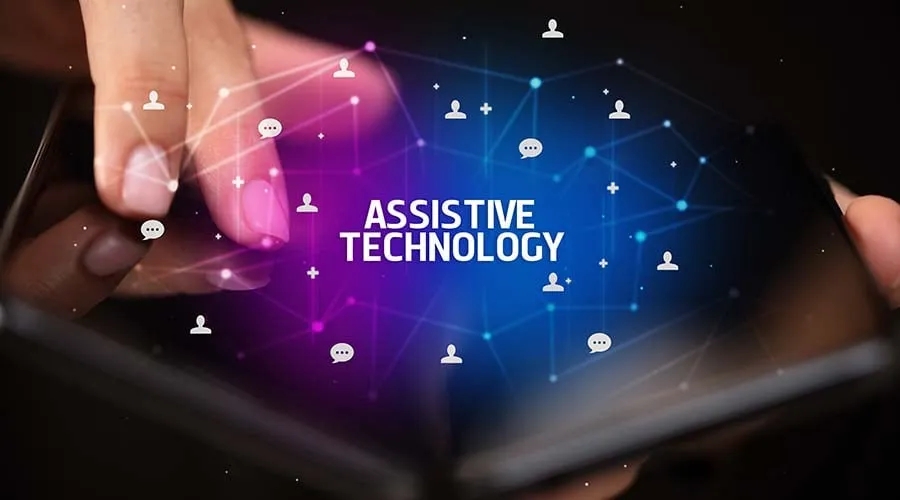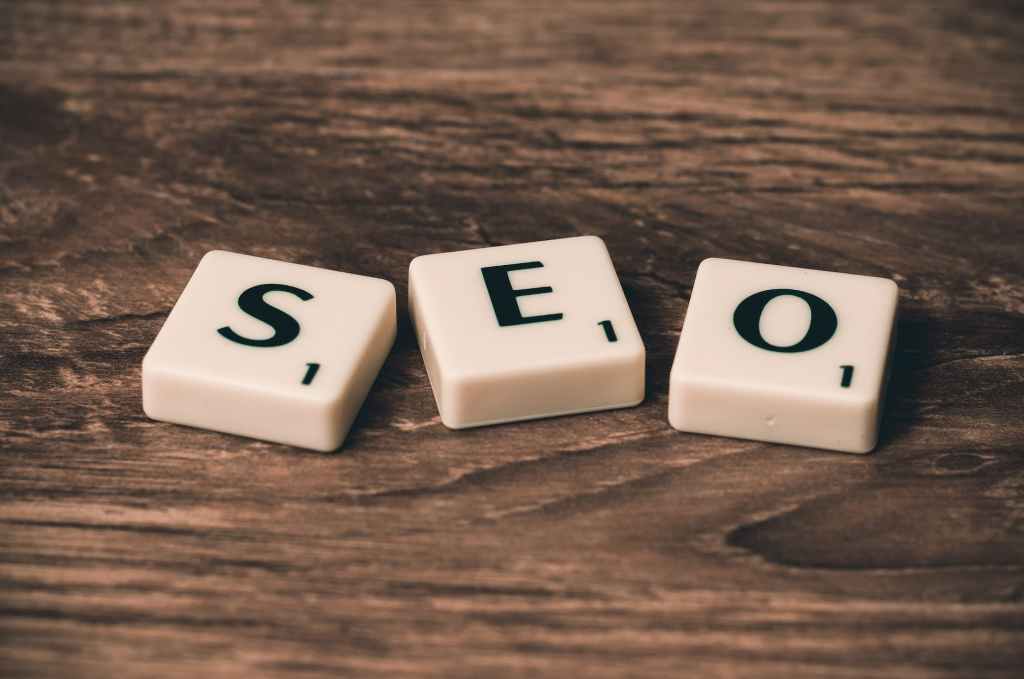What is Assistive Technology (AT)?

Assistive technology (AT) is any item, piece of equipment, software program, or product system that is used to increase, maintain, or improve the functional capabilities of persons with disabilities 123. AT can be low-tech such as communication boards made of cardboard or fuzzy felt or high-tech such as special-purpose computers 1. AT can help people who have difficulty speaking, typing, writing, remembering, pointing, seeing, hearing, learning, walking and many other things 4.
Assistive technology can be divided into two categories: assistive technology and adaptive technology. Assistive technology is any object or system that helps people with disabilities while adaptive technology is specifically designed for disabled people. Consequently, adaptive technology is a subset of assistive technology. Adaptive technology often refers specifically to electronic and information technology access 4.
Examples of assistive products include hearing aids, wheelchairs, communication aids, spectacles, prostheses, pill organizers and memory aids 5. Globally, more than 1 billion people need one or more assistive products 5.
What are Some Examples of Adaptive Technology?
Adaptive technology is a subcategory of assistive technology that refers to something specifically designed for people with disabilities 1. Here are some examples of adaptive technology:
- Screen readers: Software that reads text on a computer screen aloud for people with visual impairments 1.
- Magnification applications: Software that enlarges text and images on a computer screen for people with visual impairments 1.
- Text-to-speech synthesizers: Software that converts written text into spoken words for people with visual impairments or learning disabilities 1.
- Speech recognition software: Software that allows users to control their computer using their voice for people with physical disabilities 1.
- Closed captioning services: Text displayed on a television or video screen that provides a transcription of the audio portion of a program for people who are deaf or hard of hearing 1.
- Keyboard filters: Software that helps users avoid accidentally pressing keys on their keyboard for people with physical disabilities 1.
- Electronic pointing devices: Devices that allow users to control their computer using a pointer instead of a mouse for people with physical disabilities 1.
Learn more:
Types of Assistive products
Assistive technology products are devices that support independence, well-being, and functioning of people with disabilities or older people. They include hearing aids, wheelchairs, communication aids, spectacles, prostheses, pill organizers, memory aids, and more 1. Some examples of specific assistive technology products are mobile applications, audio and digital book players, electronic magnifiers, global positioning systems, personal digital assistants, braille reading and writing, reading machines, low vision keyboards, software, reticare blue light blockers, and talking products 12.
The World Health Organization (WHO) has created a Priority Assistive Products List that aims to promote access to essential assistive products 1.
Examples of assistive products include:
- Hearing aids
- Wheelchairs
- Communication aids
- Spectacles
- Prostheses
Choosing the right assistive product can be a complex process that depends on the individual’s needs and preferences. The World Health Organization (WHO) provides some guidance on how to choose the right assistive product 1. Here are some tips:
- Identify the individual’s needs and preferences.
- Consider the environment in which the assistive product will be used.
- Involve the individual in the selection process.
- Consider the individual’s physical abilities and limitations.
- Consider the individual’s cognitive abilities and limitations.
- Consider the individual’s social and cultural background.
- Consider the individual’s financial resources.
It is also important to ensure that the assistive product is of good quality and safe to use 2.
How Many People Have Access To AT Devices?
According to the World Health Organization (WHO), more than 2.5 billion people around the world need one or more assistive products such as wheelchairs, hearing aids, or apps that support communication and cognition 12. However, only 1 in 10 people in need have access to assistive technology due to high costs and a lack of awareness, availability, trained personnel, policy, and financing 3.
There are several ways to get access to assistive technology devices. Here are some options:
- Contact your local disability organization: Many disability organizations provide assistive technology services and can help you find the right device for your needs 1.
- Check with your insurance provider: Some insurance providers cover the cost of assistive technology devices. Check with your provider to see if you are eligible for coverage 2.
- Apply for financial assistance: There are several organizations that provide financial assistance for assistive technology devices. For example, the National Assistive Technology Act Technical Assistance and Training (AT3) Center provides information on funding resources for assistive technology 3.
- Explore free or low-cost options: There are several free or low-cost options available for assistive technology devices. For example, the Assistive Technology Exchange in New England (ATXNE) provides free or low-cost assistive technology devices to people with disabilities 1.
Sources:
Types of Assistive Devices
Assistive devices are tools or equipment that help people with disabilities or impairments to perform tasks that they would otherwise be unable to do or have difficulty doing. There are many types of assistive devices available that can help people with different types of disabilities. Here are some examples of assistive devices 123:
- Mobility aids: These include wheelchairs, canes, crutches, walkers, and scooters.
- Hearing aids: These devices help people with hearing loss to hear sounds more clearly.
- Visual aids: These include glasses, magnifiers, and other devices that help people with visual impairments see better.
- Communication aids: These include devices that help people with speech or language impairments communicate more effectively.
- Prosthetics: These are artificial limbs or body parts that replace missing or damaged body parts.
- Orthotics: These are devices that support or correct problems with the body’s musculoskeletal system.
- Assistive technology: This includes specialized computer software and hardware that increase mobility, hearing, vision, or communication capacities.
Classroom Assistive Technology Examples
Assistive technology is a great way to help students with disabilities learn and participate in the classroom. Here are some examples of assistive technology that can be used in the classroom:
- Electronic Worksheets: Students with learning disabilities like dyslexia can use electronic worksheets to complete their assignments 1.
- Phonetic Spelling Software: For many children with learning disabilities, reading and writing can be a challenge. Phonetic spelling software can help them improve their spelling and writing skills 1.
- Talking Calculators: Students who have dyscalculia can benefit greatly from a talking calculator 1.
- Variable Speed Recorders: These recorders allow students to record lectures and play them back at a slower speed 1.
- Videotaped Social Skills: Videotaping social skills can help students with autism spectrum disorder (ASD) learn how to interact with others 1.
These are just a few examples of assistive technology that can be used in the classroom. There are many more out there that can help students with disabilities learn and participate in the classroom.
Learn more:
1. masters-in-special-education.com
Smart Assistive Technology Devices in 2023
According to ZDNet 1, there are many assistive technology devices available for people living with disabilities. Here are some of the best assistive technology devices to consider:
- Smart Glasses: These glasses can help people with visual impairments by providing audio descriptions of their surroundings 1.
- Smart Cane: This cane can help people with visual impairments navigate their surroundings by using sensors to detect obstacles and provide haptic feedback 1.
- Smartwatch: Smartwatches can help people with hearing impairments by providing haptic feedback for notifications and alerts 1.
- Smart Home Devices: Smart home devices such as smart speakers and smart thermostats can help people with mobility impairments control their environment more easily 1.
In addition, Forbes has compiled a list of the 11 best and most innovative new gadgets and devices in 2023 2. While not all of these devices are specifically designed for assistive purposes, many of them could be useful for people living with disabilities.
The Best Of Assistive Technology in 2023
According to the British Assistive Technology Association (BATA), the best assistive technology in 2023 is the AngelSense watch. It is a GPS tracker with an audible device alarm, intelligent iAlerts, and an assistive speakerphone. It also comes with a 30-day 100% money-back guarantee 12.
However, the right assistive technology for you depends on your specific needs and use cases. You can choose this assistive technology if you want to have a safety net for a wide range of people with disabilities 3.
GIPHY adds alt text.
In 2023, popular GIF platform GIPHY partnered with digital accessibility provider Scribely to provide alt text captions for its most popular content, making the video-and-meme-based language of the internet more accessible to users who are blind.
Announced in late December 2022, the alt text additions were intentionally human-written, circumnavigating problems many other sites have faced with auto-generated alt text, and improving the ability of screen readers to accurately describe visual media and read webpages or social feeds for users. Starting with 15 writers working on the first 1,000 GIFs, the team at Scribely began rolling out about 3,500 descriptions per week to chip away at “the ever-expanding GIF ocean,” Scribely representatives shared in a summary of a presentation for the AccessU 2023 accessibility conference.
Netflix launches custom subtitles.
In a win for universal captioning advocates, Netflix stepped up its subtitle and captioning game by introducing customizable options for its accessibility text feature. Announced in March, the streaming service now lets users change font size and style, as well as the color and appearance of on-screen captions. As reported by the Verge, the captions include three new text style options with contrasting backgrounds to make the text stand out: Light (black text and white background), Drop Shadow (white text and black background), and Contrast (yellow text and black background).





Leave a comment